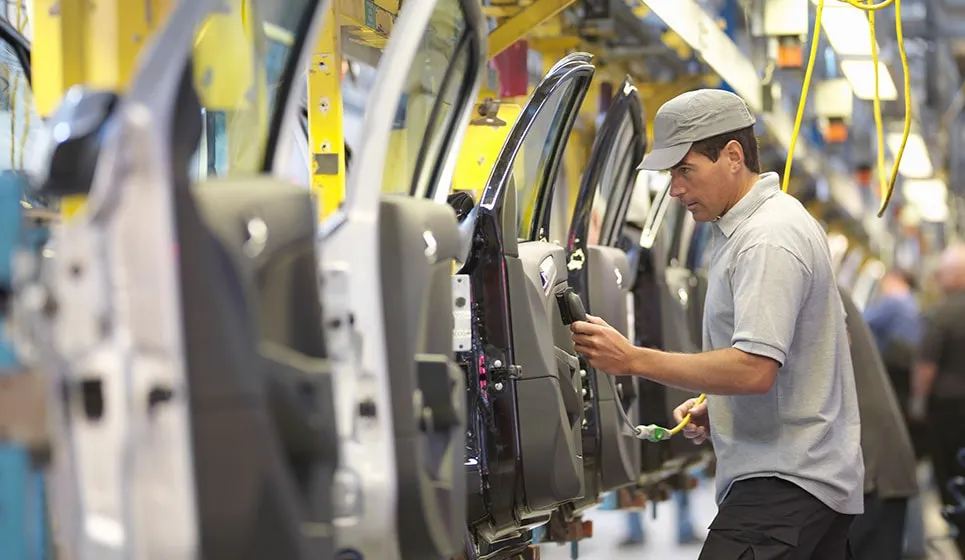The main goal of ergonomics is to optimize the safety well-being of workers and increase productivity in various work settings, such as in the automotive industry. Job tasks in the automotive industry generally involve constantly moving equipment, heavy lifting and repetitive work, which can result in a high risk of employees developing musculoskeletal disorders (MSDs).
With these job tasks and many others – which can require bending/twisting, pushing/pulling and lifting – employees working automotive jobs need to be aware of which tasks are leaving them at the greatest risk, and what they can do to improve their health and well-being at work.
High-Risk Movements in Automotive Tasks
Bending and Twisting
Any type of bending or twisting while manually handling heavy loads of materials could result in a potential MSD, so employees should avoid bending forward and twisting when carrying heavy loads. Instead, solutions such as lifting and/or turning tables should be implemented to reduce the amount of bending and twisting while manually handling materials.
Pushing and Pulling
Push and pulling is frequently done in industrial settings and can cause a risk for operators. An ergonomic workstation setup is important to consider, for example, having height adjustable equipment such as carts to fit the operator’s strength and capabilities while allowing individuals to transfer the recommended weight and force limits within a workstation or from workstation to another.
Lifting
Operators are exposed to risk when lifting, especially when the weight being lifted exceeds the recommended maximum force. Making modifications to facilities and workspaces can reduce exposure to risk, such as adding hoists, pallet jacks and carts instead of manual material handling. This can also include changing the workspace to fit the physical range of the employee, so that items are not stored above shoulder height or below knee height.
Ergonomics Can Help Keep Automotive Employees Safe from MSDs
Ergonomics can help promote a safe work environment in the automobile industry through small changes to the workplace. Whether it’s equipment being introduced or the workspace itself being altered, these changes can prevent long-term discomfort and reduce the likelihood of MSDs. Utilizing proactive ergonomics can be beneficial to both the product quality and the well-being of the operators.
Want more insight on keeping automotive employees safe from MSDs? Check out our eBooks, Learn. Do. Manage. and Preventing Musculoskeletal Disorders in the Automotive Industry.
